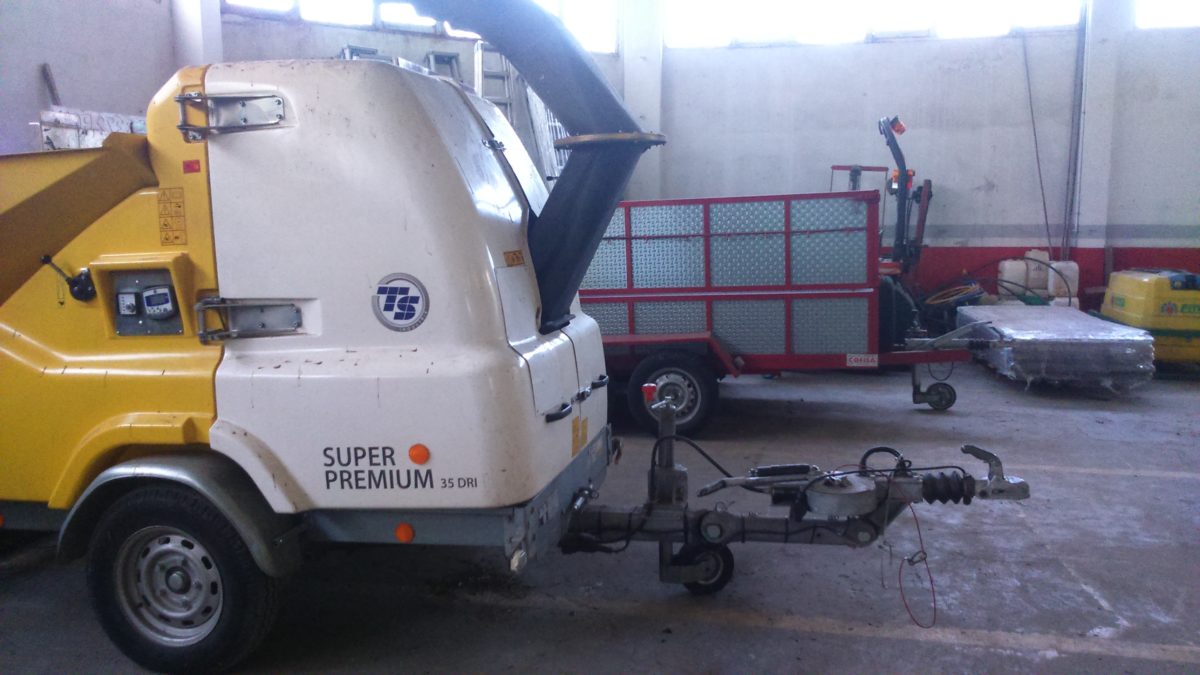Description
The trees, shrubs and grass maintenance and conservation tasks generate wood waste such as trunks, branches, leaves and mowing remains. The goal of this initiative is to reuse, recover and vaporisation the maximum volume of plant debris and reduce the waste generation to minimum:
- To prevent waste generation: tree proper maintenance, avoiding logging, shoring and drastic pruning, doing a light pruning maintenance, etc.
- Reuse and reduction of plant debris: involves the use of recycling mowers, crushers in order to redeposit the plant and mowing remains on the field. It is used into the ground as mulching, vegetable amendment, etc.
- Encourage the recycling of waste against the elimination: consists of adding to the pruning equipment a chipper or shredder pruning on trailer. The obtained pruning remains are continuously introduced into the chipper, projecting the ground material to the collectors vehicles to be transported to composting plants. This compost can be applied by its own or mixed, as substrate, organic amendment, mulching, etc.
- Wood recovery: consists of the wood debris collection and its deposit at a treatment plant where the waste is subject to sorting, cleaning and volume-reduce processes. Applications for this wood: boards manufacture, energy production and compost.
Added value
Added value
- Better use of natural resources and respect for the environment.
- Avoidance of waste elimination through dumpsites
- Decrease of use of virgin wood for board manufacture
Facts & Figures
- Reuse of waste: in 2016 88% from total of plant debris generated was intended for reuse
- Waste recycle: in 2016 5% from total of plant debris generated was intended for reuse
- Waste to landfill: From all waste debris generated, in 2016 was intended for landfill the other 7%. From 2015, it has decreased the % intended for landfill in 30%.
Challenges
- Investment in machinery (chipper, shredder, recycling mowers), machinery maintenance associated costs, costs associated with the trucks responsible for the transport of waste, waste management fees.
- There is a lack of regulation on this matter in order to avoid waste management process, it would be necessary of a specific legislation as a sub-product as it already exists for Steel waste Council Regulation (EU) No 333/2011 of 31 March 2011 establishing criteria determining when certain types of scrap metal cease to be waste under Directive 2008/98/EC of the European Parliament and of the Council. This Regulation establishes criteria determining when iron, steel and aluminium scrap, including aluminium alloy scrap, cease to be waste.
- The concept of waste, within the meaning of Article 1 of Directive 75/442/EEC and Article 1 of Directive 78/319/EEC1, is not to be understood as excluding substances and objects which are capable of economic re-utilisation. The concept does not presume that the holder disposing of a substance or object intends to exclude all economic re-utilisation of the substance or object by others.”
- “National legislation which defines waste as excluding substances and objects which are capable of economic re-utilisation is not compatible with Council Directives 75/442 and 78/319.” We can find this or other regulatory problems that avoid us to implement these measures. Also there are specific Client requirements or technical issues that do not allow to implement the measures.
- Being committed with sustainability, and embracing the circular economy model into our processes can provide Acciona better finance chances within International Finance Agencies.
